The Fun Way to Learn How to “Show, Don’t Tell”
Many of you joined me a couple of years ago on this blog as we strolled through the movie lots in Hollywood and tried on some different hats. Meaning, you learned a bit about thinking like a director, a film editor, and a screenwriter.
I want to revisit some of the ideas I put out to you because I feel they are so helpful. If you don’t have Shoot Your Novel, consider getting it and digesting all the unique, great material in there. No other book explains and shows how novelists (or writers of any kind of fiction or creative nonfiction) can use cinematic technique effectively.
The book isn’t about story structure—it doesn’t tell you where all the plot points and turning points are. It’s about approaching scene structure the way directors do—as a compilation of segments, using different camera shots, which then get edited into a smooth, seamless scene.
If you learn only one thing from Shoot Your Novel, I hope it’s this: your job as the creator of your story is to make your reader pay attention to what you want her to.
Cinematic technique for scene building is all about leading your reader visually by the hand and showing her what you want her to see.
Fiction writers, I’m guessing, almost never think of scene structure the way filmmakers do. Filmmakers read a script scene and think about the point of that scene. How it is going to build to a key moment (the high moment I always talk about). Then they break it into pieces.
Sol Stein in his book Stein on Writing says, “Twentieth-century readers, transformed by film and TV, are used to seeing stories. The reading experience for a twentieth-century reader is increasingly visual. The story is happening in front of his eyes.”
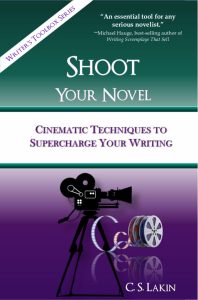 This is even more true in the twenty-first century. As literary agent and author Donald Maass says in Writing 21st Century Fiction: “Make characters do something that readers can visualize.”
This is even more true in the twenty-first century. As literary agent and author Donald Maass says in Writing 21st Century Fiction: “Make characters do something that readers can visualize.”
I mentioned that writers are told to show, not tell, yet they’re not shown how.
Here’s what I say in Shoot Your Novel:
There are myriad choices a writer has to make in order to “show” and not “tell” a scene. Writers are often told they need to show, which in essence means to create visual scenes the reader can “watch” unfold as they read.
But telling a writer to “show” is vague. Just how do you show? How do you transfer the clearly enacted scene playing in your mind to the page in a way that not only gets the reader to see just what you want her to see but also comes across with the emotional impact you intend?
Writers know that if they say “Jane was terrified,” that only tells the reader what Jane is feeling; it doesn’t show her terrified. So they go on to construct a scene that shows Jane in action and reacting to the thing that inspires fear in her. And somehow in doing so writers hope they will make their reader afraid too.
But that’s often like using a shotgun approach. You aim at a target from a hundred yards away with a shotgun and hope a few buckshot pellets actually hit the bull’s eye. Many writers think if they just “point and shoot” they will hit their target every time. But then, when they get lackluster reviews, or dozens of agent or publisher rejections, they can’t figure out what they did wrong, or failed to do.
Why is this? Is there some “secret formula” to writing visually impacting scenes every time?
No, not secret. In fact, the method is staring writers in the face.
Don’t use a shotgun method and hope your readers will react the way you intend. If you are specific in how you set up your scenes, you can direct your readers to pay attention to the exact details you want them to, and you can lead them to feel what you want them to feel.
The key objective in a scene is to evoke emotion.
If you don’t lead your readers in the right way, they aren’t going to feel that emotion.
They aren’t going to get engaged in your story, and, guess what? They’ll stop reading.
Write Down the Camera Shots to Get a Cinematic Feel
Pay attention the next time you watch a movie (or a TV show) and note how many different shots are in one scene. In fact, if you want a helpful assignment, try this:
Write down every shot on a piece of paper as you watch (it’s easier if you use a DVD so you can pause). Pick a movie in your genre. Why? Because this will help you learn some things about the pacing, tone, and structure of scenes that are found in stories like yours.
Now, when I say write down the shots, I’m talking about the camera angles. You don’t need to know what they’re called (although, if you’ve studied Shoot Your Novel, you can give yourself a gold star if you can nail naming every shot!). You might have an establishing shot (showing a brief view of the setting to indicate where the scene is set), some close-ups and long shots. You might have the camera pan across a crowd or zoom in on something small. Just jot down the basic action of the shot.
What you want to notice is that one scene, which might be only a minute long, may have a dozen shots. Fast-action scenes may switch angles and shots every couple of seconds (I’m picturing Bruce Willis destroying the helicopter with his car). A more slow-moving scene—one in which two people are quietly having a private conversation—may have shots that last twenty seconds. These shots or segments are then strung together during editing.
The purpose in all this is to make the viewer pay attention to specific things. With a close-up, you as viewer are forced to see small details you would have missed if the camera had been positioned two blocks away. With a long, wide shot, you can see a huge explosion destroy all of downtown Dallas. Or the Death Star. Those shots are chosen for best impact.
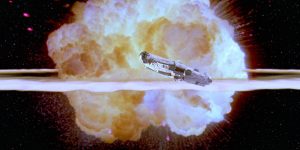 How impacting would it be to be close up on a Trooper when the Death Star blows up? You would have no idea of the real scope of the explosion. And if you needed to see that the murder victim in a movie had a tiny tattoo behind her ear, how could you do that from far away?
How impacting would it be to be close up on a Trooper when the Death Star blows up? You would have no idea of the real scope of the explosion. And if you needed to see that the murder victim in a movie had a tiny tattoo behind her ear, how could you do that from far away?
So, to tell a powerful story, writers need to paint a picture. But it can’t just be a huge landscape to view from a hundred yards away. There are details you need to bring out, and using specific camera shots can make your reader pay attention to what you want her to.
And all this ties into the purpose of your scene, which is to reveal some important bit about your characters and/or plot.
Spend a little time this week studying how movies string together the various segments that make up a scene. Shoot Your Novel explains how all the major camera angles and filmmaking techniques can cross over into fiction, so I’m not going to go in length about that.
Share some of your “findings” once you do this assignment. You might time a scene (if you have a DVD, pick a scene, note all the shots, then go back and time the scene, or vice versa). How many different shots were in that scene? Compare a high-action scene to a slower one. What stands out to you?
For a deep look at how novelists can use cinematic technique, get Shoot Your Novel. No other writing craft book teaches writers how to segment their scenes the way filmmakers do, using camera shots and cinematic devices to create powerful scenes and evoke emotion.
The most effective way to write scenes is to show, not tell, and this highly acclaimed book will give you unique tools to load your writer’s toolbox with.
With Shoot Your Novel, Susanne Lakin does something wonderful and unique. While lots of us in the business of helping writers and storytellers recommend adding vivid images to scenes, Lakin goes much further to reveal how employing the tools and techniques of movie directing, editing and cinematography will give your fiction deeper meaning and greater emotional impact. Her book is an essential tool for any serious novelist.
—Michael Hauge, Hollywood screenwriting coach, author of Writing Screenplays That Sell
Get your print or ebook copy here!
Featured Photo by Denise Jans on Unsplash

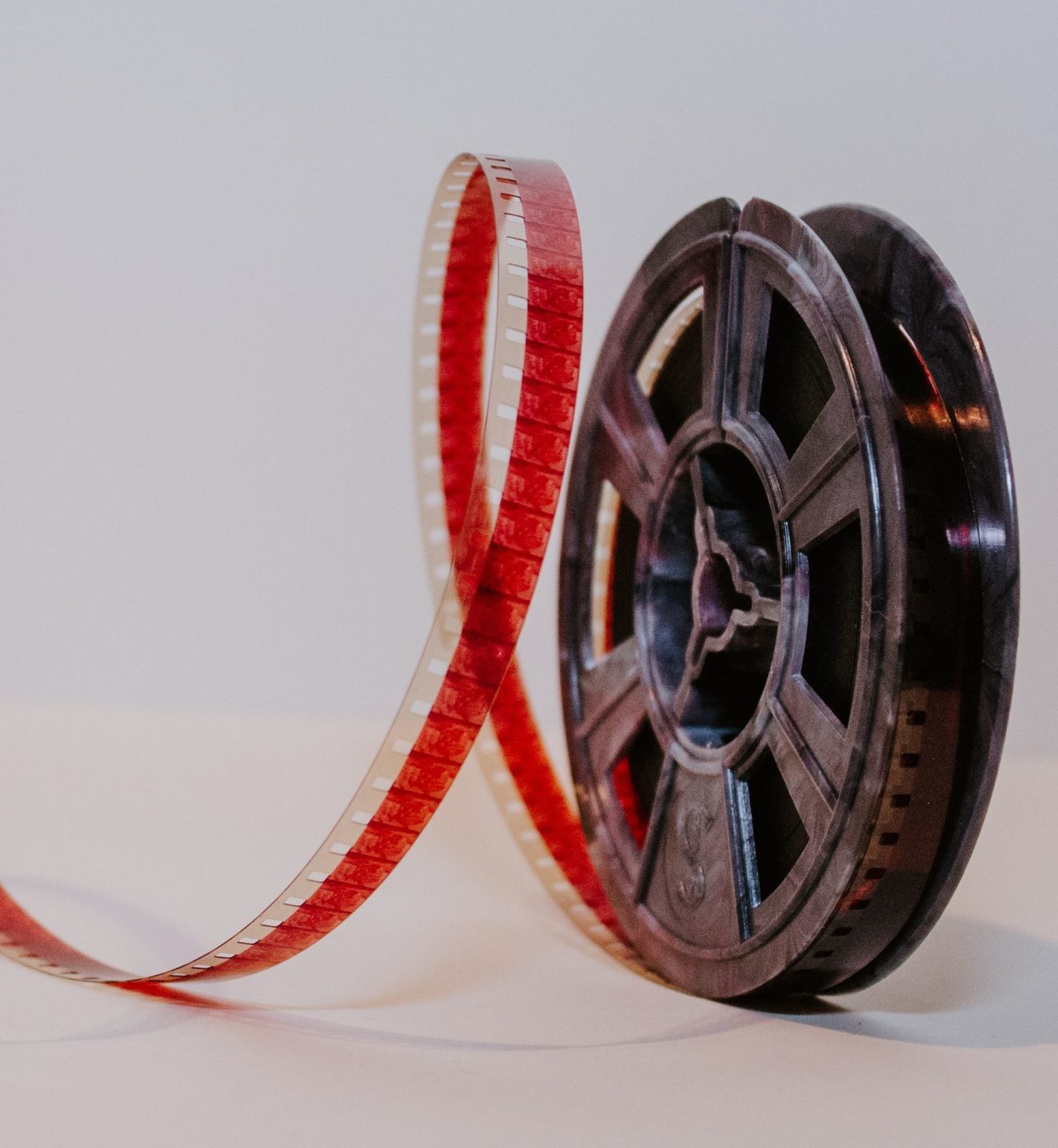

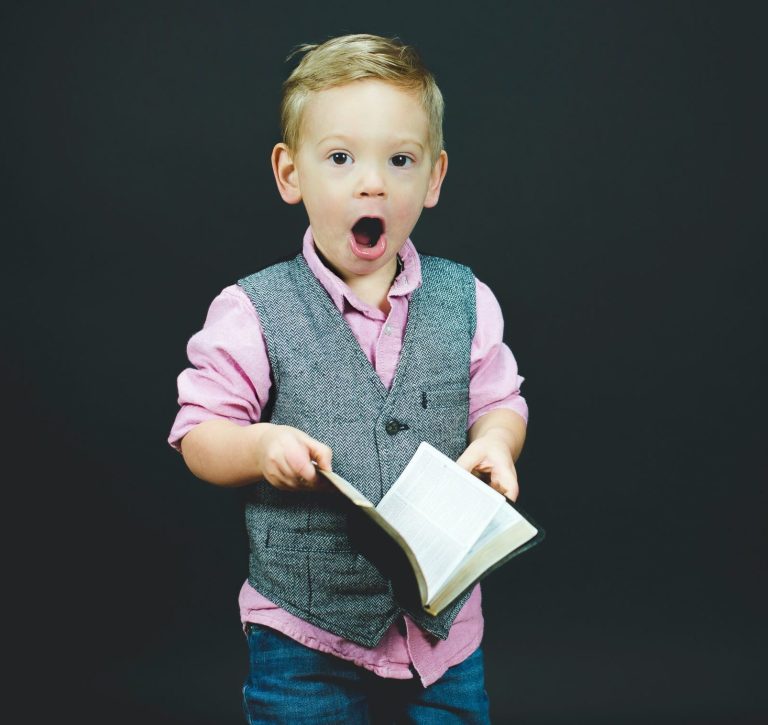

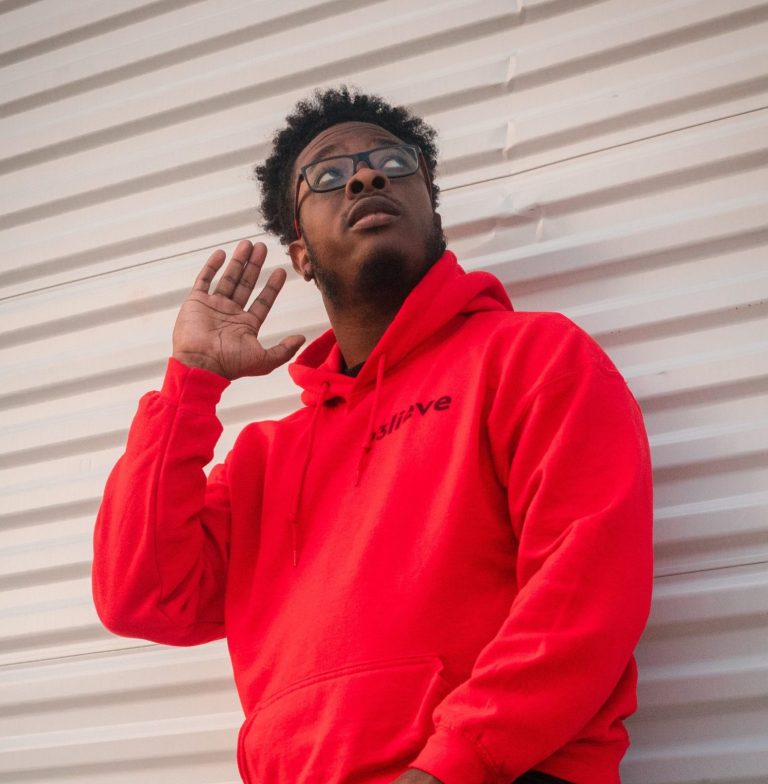
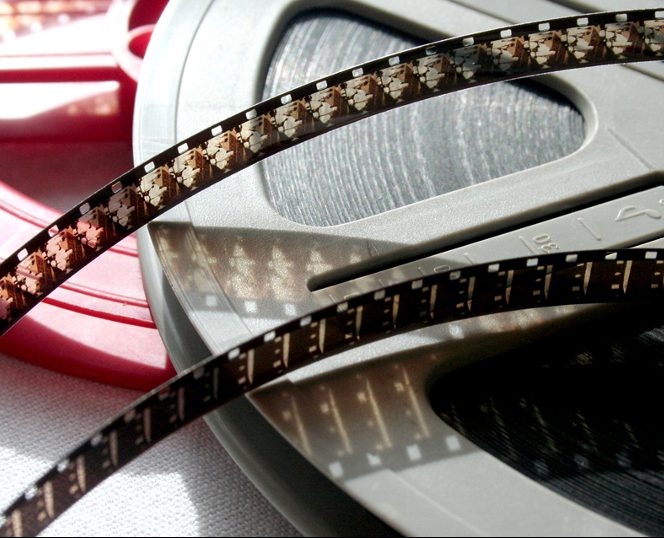
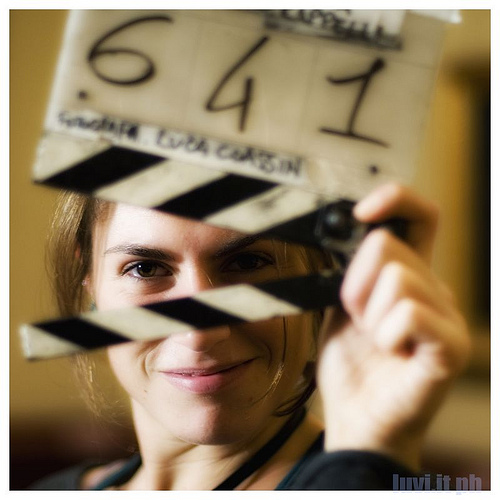




Iconic moment in film history. I replayed that helicopter shot so many times–and I don’t particularly like action films!!! I’m just like “he killed a helicopter WITH A CAR….” thanks for the memory.